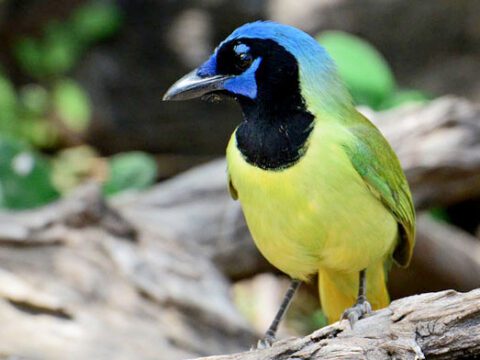Surveying Peru’s Entire Coastline
By Nate Senner
February 26, 2010

Twenty-five years ago, two Canadian biologists undertook a massive task: they surveyed the entire coast of South America for shorebirds via small airplane. The publication that emerged is a landmark in our knowledge of South American shorebirds. Unfortunately, for many areas including Peru, it’s also our only knowledge.
This February, with the help of the U.S. Fish and Wildlife Service, BirdLife International Peru, Nikon, Calidris, and the Centro de Ornitologia y Biodiversidad (Corbidi), a team from the Cornell Lab traveled the entire coast of Peru, teaching three workshops on shorebird surveying and visiting 37 potentially important shorebird sites.
The basic format is this: In the cities of Mollendo, Lima, and Piura we spent a morning covering shorebird identification, survey methodology, and conservation. Then, in the afternoon, we visited a local beach to practice what we learned. The next morning we split into teams of five and headed out into the field for real censuses. Afterward, all the data go online in the brand-new eBird Peru portal.
So how did the first workshop go? Great. Twenty-five college students and eight staff from the Santuario Nacional de Las Lagunas de Mejia, near Mollendo, packed the classroom for the morning’s lessons.
The undeniable fun of listening to presentations aside, the highlight of the day had to be our field trip to Mejia, one of South America’s largest and most important coastal wetlands. It didn’t disappoint. Most exciting for me was finding four Hudsonian Godwits, quite a rare bird in Peru. We were also graced with passing flocks of Semipalmated Sandpipers, Greater and Lesser yellowlegs, and two very southerly Western Sandpipers. We also helped document the first-ever Peru record of White-winged Coot, a visitor from southern Chile.
The only problem for the day occurred when we the bus wouldn’t start for our return journey to Arequipa. Hailing a public bus seemed to be our only option, so all 35 of us piled onto two buses to be serenaded by blaring criollo music for the three hours back to Arequipa.
Needless to say, the next morning dawned a little too early, but we dispersed to our six sites nonetheless. My group headed five hours to the south, nearly to the Chilean border, to a site called Boca del Rio. By far the biggest excitement of the day came from the group covering the Lagunas de Ite. They found another five Hudsonian Godwits, plus the first record for Moquegua department of Marbled Godwit. Other groups found Stilt and Pectoral sandpipers and Whimbrels and Ruddy Turstones in the hundreds.
After a much-needed day of rest, it was on to workshop 2 in the capital city of Lima. Stay tuned for an update on what we saw there—and a few shorebird photos, too.
Thanks to Fernando Angulo, Brad Andres, Luis Alza, Nataly Aranzamendi, Javier Barrio, Stephen Gast, Marshall Iliff, Richard Johnston, Daniel Lane, Alex More, Daniel Osorio, Thomas Valqui, and all of the other participants! And many thanks to Nikon for providing great telescopes.


All About Birds is a free resource
Available for everyone,
funded by donors like you






